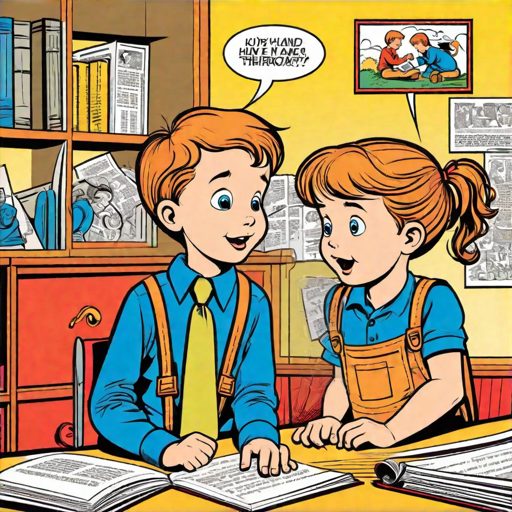
Developmental Skills: Early Talkers’ Secret?
Recommended for Middle Grades
Welcome to a journey into the intricate world of language development in children. Picture a bustling city street, where each person’s voice contributes to a grand, chaotic symphony. This is much like the world of a child, where every sound, every word, forms the building blocks of their language.
We’re not discussing biryani secrets or the perfect chai brew here; this is about comprehending Developmental Skills in children’s language growth. Picture it as decoding a puzzle, one word at a time.
Listen to the news
The Unpredictable Pace of Language Developmental Skills
- In the realm of language development, each child’s journey is as unique as their fingerprint. By 18 months, many toddlers are already experimenting with single words, and by the age of two or three, they start stringing these words into phrases and sentences. However, some kids are like early bloomers in a garden, speaking in full sentences way ahead of their peers.
- Elika Bergelson from Harvard University, much like a detective, delved into this puzzle. She conducted a study with a global scope, enrolling over a thousand children under four years. The aim? To uncover the factors influencing this spectrum of language abilities in children.
The Surprising Findings: It’s All About the Environment
- Contrary to what some might think, Bergelson’s study revealed that a child’s tendency to speak more isn’t tied to their gender, socioeconomic status, or exposure to multiple languages. This is like discovering that the best ingredients for a dish aren’t the most exotic or expensive ones but the ‘Developmental Skills’ right in front of you.
- The study found that kids who heard more adult talk were the ones chatting away more themselves. It’s as if children are sponges, soaking up the words and sentences from adults around them. This finding is crucial; it suggests that simply talking more around children could help boost their language development.
- Bergelson’s research wasn’t confined to a single city or culture. It spanned 12 countries and 43 languages, providing a rich, diverse backdrop for understanding language development across different communities.
The Backbone of the Study
- The study used wearable recorders to capture the daily audio environment of children from various backgrounds and developmental stages. Imagine these recorders as unobtrusive observers, silently capturing every nuance of a child’s auditory world.
- A crucial tool in this study was machine learning, which sifted through over 40,000 hours of recordings. This technology acted like a fine sieve, separating the relevant vocalization patterns and factors influencing language development.
- The study’s results were clear: children’s vocalizations increased with age, but more importantly, they increased with the amount of adult talk they were exposed to. For every 100 adult words heard, a child’s vocalizations increased significantly. This effect was even more pronounced with each passing year of the child’s development.
Beyond Just Counting Words
- The study, while groundbreaking, had its limitations. It focused on the quantity of words rather than the quality or sophistication of the language. This means factors like socioeconomic status might still play a role in more nuanced aspects of language development, such as vocabulary or grammar.
- Bergelson’s work opens new avenues for understanding and potentially enhancing language development in children. It highlights the importance of adult interaction and conversation in a child’s early years. However, there’s still much to explore, like the hidden nuances of language sophistication and the impact of reading and storytelling on language skills.
The Dance of Words
As we’ve seen, the development of language in children is a complex, multifaceted process, much like a dance where every step, every move counts. The key takeaway from Bergelson’s study is the profound impact of adult interaction on a child’s language development. It’s not about where you’re from or what languages you speak; it’s about the words and conversations that surround the child.
Remember, every child’s journey with language is unique. Some may take their first steps in this dance earlier than others, but each one, in their own time and way, will find their rhythm in the symphony of words.
Similar Stories
- Early Childhood Nutrition: Smarter Starts Here?
- Tiny Ears, Big Smiles: Nursery Rhymes
- Screen Time: Shaping Children’s Sensory Abilities?
- Kids’ Bones Thrive: Wellbeing in Green Spaces
Curious Times is a leading newspaper and website for kids. We publish daily global news aligned to your learning levels (also as per NEP 2020): Foundational, Preparatory (Primary), Middle and Senior. So, check out the News tab for this. We bring kids’ favourite Curious Times Weekly newspaper every weekend with top news, feature stories and kids’ contributions. Also, check out daily JokesPoke, Tongue Twisters, Word of the Day and Quote of the Day, kids need it all the time.
Curious Times News Program for Schools for FREE. Over 5,000 schools and teachers from all over the world have joined our programme so that students and teachers can get FREE Educative Newspaper. Here, kids can take part in world events and win prizes and certificates for free through their schools.
Moreover, schools are sharing important School News, like interviews with the principal, notices about new students, contests, and results, not just on social media but also on a news website for kids and other schools.
Thus, do not wait any further, sign-up for your school for FREE.
The following social media platforms allow you to communicate with us: WhatsApp, Instagram, Facebook, Youtube, Twitter, and LinkedIn.
0 (Please login to give a Curious Clap to your friend.)
